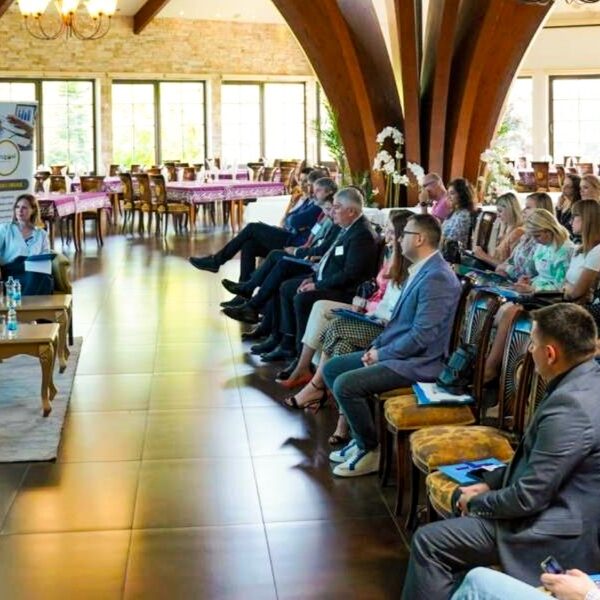Professor Kurtanović, how does one become a geologist? How did you become a geologist and what made you decide to pursue this path?
In my case, it was undoubtedly youthful curiosity about phenomena I encountered on a daily basis, such as the formation of mountains, rivers, volcanoes, and the study of ores and similar subjects. After finishing high school, I enrolled in the Department of Geology at the Faculty of Mining and Geology in Belgrade. I chose the field of economic geology, which involved exploring mineral deposits, back in 1968.
During that time, there were opportunities for young geologists everywhere, so I went to Trepča, to the Stari Trg mine, where I found employment and discovered my interests along with all the other possibilities that this deposit offered to a young geologist. I stayed there for fifteen years, with the last eight years as the chief geologist of the mine. Then I moved to the Geology Institute in Sarajevo, where I took on the task of exploring polymetallic deposits in Vareš and led the design work on the Rupica deposit. We established a continuous lead-zinc-barite mineralization of about 50 meters, which has now become a polymetallic mine and the gold deposit of Eastern Mining Metals company.
During the period of opening the cerussite deposit in Olovo, I worked for three years in the company Mineco, specifically in the working unit Geomet Olovo. Afterward, I conducted exploring on other mineral resources, such as non-metals, bauxite, coal, and so on.
Lykos Balkan Metals company has been conducting geological examination in the municipalities of Mrkonjic Grad and Jezero for some time now. What are your observations after visiting the exploration area?
My observations can be summarized as follows:
Sinjakovo, based on the level of exploration achieved, is in a state that does not confirm the “in situ” condition of old workings. Explorations have been carried out, but the state of old mining-exploratory workings has not been identified. The large amount of waste material and the presence of mineralization pose challenges for further exploration. The positions of exploration drillings were conducted in Triassic sediments, and in my understanding, the mineralization is related to Silurian-Devonian formations as the host of ore mineralization and is directly genetically and paragenetically linked to the separated quartz-keratophyre magmas.
Your career spans several decades, and you have achieved many remarkable results. Have you had any experience with larger gold deposits or similar noble metal deposits in your career?
Most of my career has been focused on the exploration of base metal ore deposits at the Trepča mine, Stari Trg in Kosovo, as well as polymetallic deposits in Vareš, particularly at the Rupice site, currently managed by Eastern Mining Metals company. I have also worked on the exploration of lead deposits in Olovo, which is being exploited by Mineco company.
What is your estimation of the potential gold reserves in the municipalities of Jezero and Mrkonjic Grad?
The assessment for Sinjakovo in Mrkonjić Grad is uncertain unless the area of the old mining works is resolved. Based on my experience at the Trepča mine, it has been shown that the spatial continuity of deposits ends abruptly. It is possible that the ore body may diminish in thickness compared to the planned values, either laterally or in dip, but there has always been a continuation of the deposits at depth and laterally. I have a similar experience from the lead deposits in Olovo.
The assessment for the Jezero site is based on the obtained analyses, which are promising, especially considering the brecciated limestones in close proximity to the separated quartz-keratophyre magmas. The brecciated limestones near the contact with quartz-keratophyre magmas are genetically and paragenetically related to the formation of polymetallic mineralization that carries significant concentrations of noble metals, particularly gold.
What is the potential economic benefit for local communities in case of discovering larger gold reserves?
The benefit for the local community is primarily of an economic nature, including obtaining concession fees, employment opportunities for the population, retaining the younger workforce, and significantly improving the overall living standards of the surrounding municipalities.
How do you comment on the increasingly frequent criticisms and attacks claiming that geological examination has a negative impact on the environment?
Criticism of exploration is usually directed with the aim of diverting attention and causing disruption by other competing lobbyists.
Geological exploration can be illustrated on an example of a cross-section of an apple pierced with a sewing needle. The needle leaves a small scar that quickly heals. The same applies to exploratory works. After the completion of exploration, the exploration points close naturally.
The exploration process, especially the exploratory works at the Sinjakovo and Jezero sites, will undoubtedly not disturb the existing environmental conditions.
Is there any recorded data worldwide indicating that geological examination has jeopardized the environment?
I am not aware of such information.
What would you say to concerned citizens and those who frequently spread misinformation, often questioning the expertise of geologists and even their dignity on a personal level?
Human pride, fueled by vested interests, is a tool that restricts exploratory works without any real basis. It involves insinuations.
In any case, the expertise of geologists in conducting exploration works is in line with the dignity of our profession.










